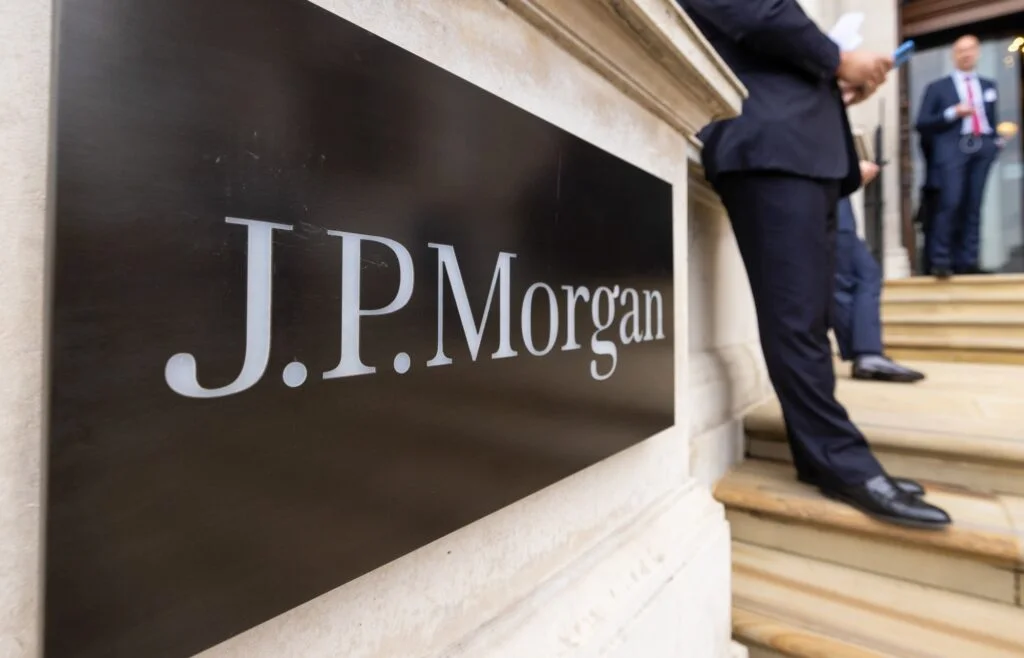Within the next year, JPMorgan aims to increase the rate of its daily settlements utilizing the blockchain-based JPM coin by a factor of ten.

JPM Coin, the digital token of JPMorgan Chase & Co., is anticipated to facilitate daily transactions worth up to $10 billion within the next one to two years, according to Umar Farooq, the bank’s Global Head of Financial Institution Payments.
JPM Coin Transaction Growth
Farooq anticipates a substantial increase in transactions of five to ten times within this period, given that JPM Coin currently handles an estimated $1 billion per day.
He stated, “We believe it will begin to take off,” in an interview with Haslinda Amin of Bloomberg Television on Wednesday at the Singapore FinTech Festival.
Using a private blockchain network, JPM Coin facilitates dollar and euro-denominated payments for wholesale customers. Although it is one of the few operational blockchain applications developed by a major bank, its proportion remains negligible compared to JPMorgan’s $10 trillion in daily US dollar transactions.
Supporters of blockchain technology contend that, in comparison to current technologies, it can facilitate instantaneous remittances at a reduced expense. However, comparable testing of the scalability of digital ledgers and traditional payment networks has yet to occur.
JPMorgan And Payment Programming
It is noteworthy that JPMorgan is effectively implementing its JPM coin in various applications. An additional advancement is achieved by JPMorgan’s Onyx, a blockchain-powered payment system, through the introduction of a programmable payments feature for its digital token, JPM Coin.
This enhancement enables customers to automatically program the system to handle financial obligations such as margin calls and past-due payments.
Onyx’s global director of coin systems, Naveen Mallela, disclosed this week that Siemens, headquartered in Germany, established its transfer account using JPMorgan’s JPM Coin system, thereby addressing potential funding gaps.
JPMorgan’s JPM Coin has been enhanced to enable customers to program their accounts with conditions that facilitate the movement of funds to settle delinquent payments and margin calls.
Implementing programmability represents a noteworthy achievement for tokenized money and digital currencies, as it paves the way for an industry-wide dynamic and event-driven infrastructure. This innovation is essential for attaining programmable, automated, and real-time treasury operations.
